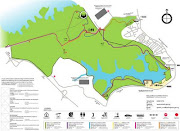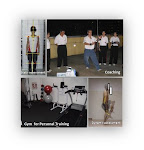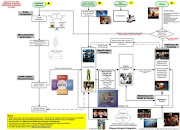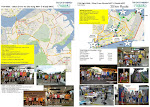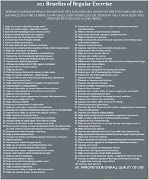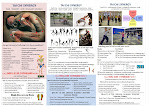MInd Training for TaiChi. Call +65 94312135 or email to tsenyu1@singnet.com.sg
TAI CHI SYNERGY SERVICES
The rack can be purchased and is specifically designed to achieve mobility (Refer to http://taichihealthfitness.blogspot.com/ for the full descriptions and purchases).
■ It allows you to stretch the anterior muscles of the chest and shoulders that are deemed short and often inflexible due to poor posture.
■ It mobilises the thoracic spine, increasing your ability to extend and rotate through this important area.
■ Mobilising the thoracic region helps increase the available movement in the shoulder and pelvic region, allowing us to move more freely and efficiently.
■ Serves as treatment equipment and later as fitness equipment during the maintenance phasse. Enhance quality of life over life cycle
Many good results and testimontials have been received from Sedentary adults, Yoga, Pilates and Tai Chi practioners / instructors, cyclists, runners, swimmers, golfers, tennis players, badminton players, dancers, scoliosis clients, clients with low back pain / hand numbness / nerves impingement etc.
Provides You With Physical Activity Tips and Recommendations.
Saturday, July 21, 2012
Gait disturbances — including slowing of walking pace or variations in stride — may be an indicator of cognitive decline
Gait disturbances — including slowing of walking pace or variations in stride — may be an indicator of cognitive decline, new research suggests.
Four new studies presented here at the Alzheimer's Association International Conference (AAIC) 2012, suggest that observing and evaluating gait in older patients may be a valuable tool when trying to determine the need for further cognitive evaluation.
In the first study, investigators from the Basel Mobility Center in Basel, Switzerland, showed that gait speed slowed and became more variable as cognitive decline progressed.
"Small changes in variability, not visible to the naked eye, can be measured, and those small changes can have a heavy clinical impact," principal investigator Stephanie A. Bridenbaugh, MD, from the Basel Mobility Center, told reporters attending a press briefing.
For example, Dr. Bridenbaugh noted that a change in stride length of just 1.7 cm from one stride to the next can almost double the risk of an older person falling within the next 6 months.
Increased gait variability, she added, can also increase the risk for dementia within the next 5 years, so being able to detect walking irregularities before falls occur or before dementia develops is "relevant and important," she added.
To determine whether gait analysis may aid in the diagnosis of cognitive impairment, the investigators followed 1153 older men (average age, 77 years) who were outpatients at a memory clinic as well as a group of healthy control participants from 2007 to 2011.
Study participants were divided into 3 groups on the basis of their cognitive status. These included healthy cognition (n = 357), mild cognitive impairment (n = 309), or Alzheimer's dementia (AD) (n = 487).
Those with AD were further subdivided into mild (n = 219), moderate (n = 230), or severe (n = 38).
Gait was measured using a 10-meter-long electronic walkway with almost 30,000 integrated pressure sensors.
All participants performed 1 normal walk and 2 different dual tasks — normal walking (self-selected speed) or walking while simultaneously counting backwards out loud or naming animals.
The researchers found that gait slowed as cognitive impairment progressed. In addition, compared with healthy control participants, all cognitive groups' gait was slower during dual task vs normal walking.
Dual Tasking Key
Gait variability, said Dr. Bridenbaugh, remained relatively stable during the normal walking cycle task until AD was moderate or severe. But during dual tasking, gait variability was higher in all cognitive groups. In addition, variability worsened as dementia progressed.
It was noteworthy, she added, that if only gait had been measured during the single walking task, gait changes would not have been detected until the latter stages of cognitive impairment.
"Quantifying gait during dual tasking allows detection of increased abnormal gait variability already at the stages of mild cognitive impairment. So for me, the particularly interesting cases are the ones in which gait variability is abnormally increased during dual tasking but neuropsychological testing shows normal cognition," she said.
"Those are generally the cases where functional impairment preceded measurable cognitive impairment. and I think the situation should trigger a mental flag alerting us to impending problems with both gait and cognition," she said.
The study indicates that dual task paradigms can detect subtle gait differences that would not be picked up by a single walking task alone, she added.
Early Predictor?
Similarly, the Mayo Clinic Study of Aging (MCSA) showed that study participants with lower cadence, velocity, and amplitude of the stride length experienced significantly larger declines in global cognition, memory, and executive function.
Although previous research has examined gait abnormalities that may be associated with cognitive impairment and dementing illnesses, it is unclear which gait components may be associated with future cognitive decline.
"We observed an association between reduced gait velocity, cadence, and stride length and both global and domain-specific cognitive decline in our population. These results support a possible role of gait changes as an early predictor of cognitive impairment," study investigator Rodolfo Savica, MD, Mayo Clinic, Rochester, Minnesota, said in a release.
The MCSA measured stride length, cadence, and speed of more than 1341 study participants through a computerized gait instrument at 2 or more visits 15 months apart.
Outcomes included results on the Short Test of Mental Status (STMS) and results of assessment of 4 neurological and neuropsychological tests covering 4 domains that included memory, attention/executive function, language, and visuospatial ability.
In addition to memory, attention/executive function, language, and visuospatial ability, lower gait measures were significantly associated with a greater decline on the STMS.
Gait Training to Prevent Dementia
In a third study of 1232 individuals aged 49 years and older, investigators from the Rotterdam Study in the Netherlands found that specific aspects of gait are linked with specific cognitive abilities and function.
Specifically, researchers found that walking rhythm, which reflects walking stride time and cadence, was significantly associated with information processing speed; executive function was associated with walking pace and variability; and fine motor speed was associated with walking in tandem or heal to toe walking, in which the heel of the front foot is placed so as to directly touch the heel of the back foot, as though walking on a tightwire.
Memory, the researchers report, was not associated with any aspect of gait.
"These findings," said study investigator Mohammad Ikram, MD, PhD, from Erasmus MC, Rotterdam, "provides a better understanding of this full spectrum of brain dysfunction. It's not just general cognition and general gait; there is this subtle correlation between these various domains."
Against this background, said Dr. Ikram, future studies should explore the link between gait and dementia and AD.
"So can we use gait to predict Alzheimer's dementia before cognitive symptoms of dementia develop; and the reverse of that question is, can gait training be used to delay Alzheimer's dementia?" he said.
A Better Measure?
Finally, a study by researchers at Oregon Health & Science University in Portland suggests that continuous in-home monitoring may be a more accurate measure than single gait tests done, for example, at an annual physical examination.
Lisa Silbert, MD, and colleagues worked with 19 dementia-free volunteers enrolled in the Intelligent Systems for Assessment of Aging Changes (ISAAC) study.
According to Dr. Silbert, walking speed taken at a single time point may overestimate walking abilities in the elderly.
Practical Implications
Commenting on the studies' findings for Medscape Medical News, William Thies, PhD, chief medical and scientific officer of the Alzheimer's Association, said that assessing gait is a practical tool that physicians can use as an early warning sign of dementia.
"It gives [clinicians] another tool to pick out those people that they may want to have a conversation with about memory or that they want to refer for more intensive evaluation of their cognitive function," he said.
"We know how hard it is for the primary care doc to identify those people who are in the very early stages even of dementia. And so we think that this is something that will be useful to them and easy to build into their practice. It doesn't take a lot of time and doesn't cost anybody a lot of money. All of that seems attractive," said Dr. Thies.
References
1. Alzheimer's Association International Conference (AAIC) 2012. Abstract # O1-08-02, P1-073, P2-022, P2-169. All presented July 15, 2012.
21km/25km FUN Brisk Walk on 21 Jul 2012. From Yio Chu Kang MRT (3:00pm) - Marsiling MRT (11:00pm)
We have done very well on the 21km and 25km FUN Brisk Walk
3:35pm – Yio Chu Kang MRT (Start Point)
6:30pm – Reaching Sembawang Seasport Club (Check Point 1)
8:30pm Dinner at Woodlands (21km)
9:30pm – Reaching Republic Polytechnic (Check Point 2)
10:15pm - Woodlands Waterfront
10:45pm – Marsiling MRT (Check Point 3)
10:50om - Debrief
More photos are in the facebook http://www.facebook.com/tan.enyu#!/media/set/?set=a.10151022780003643.446043.636278642&type=3
My Core Services (Call SE Tan at 9431-2135 OR email: tsenyu1@singnet.com.sg)


Client Testimonials
Joan, Tai Chi student from Yio Chu Kang CC
"Hi Maureen, Enyu,
Thank you for taking time to prepare and share your knowledge at our training clinic on Sunday. Nice to have you around to share on your expertise. I think I speak for all attendees to say that we all brought back muck insight to our walking techniques.
FYI and already confirmed, we will also load the pictures into LTAW's website "
Ng Yousi - Let's Take A Walk 2009 - Chairperson
Weizhen Chen - Let's Take A Walk 2009 Committee
"I learnt loads and enjoyed Sat's session!" Thank you very much Coach Tan :)" - Tapering Training
" The whole team (Maureen, GG, Coach Tan and Jon) worked well with each other strengths, which I truly respect. Based on the tentative resulta, EneRgyworkz team was accompanied by other teams with similar timings. More importantly, the distance was finished and not with terrible injuries"
Diane, Shariff, GiaYee - EneRgyWorkz Marathoners NorthFace100 2009
"I am doing the exercise prescriptions every daily and really I am feeling better. Thank you very much with you around, I will be well"
Ang KH, Polytechnic Lecturer - walking deficiencies, cannot squat, diabetes and high blood pressure (under medication)
" Wishing you a Happy Teacher's Day (1st Sep). Thank you for your patience in helping your student auntie to heal. I managed to knee at church on Sunday. I am so happy that my legs does not hurt already. I will always remember you as my World Best Teacher :-) Thank you. "
Elise Nge, Business Executive
"I have followed the training methods you taught me on stretching and postural techniques; and now when I do my Tai Chi, my knee pain has disappeared. Truly appreciate and thank you so much for teaching me the scientifc ways of practising Tai Chi"
Bay MK, Product Promoter
" Thank you for treatment to solve my heel pain problem(plantar facsiitis). It really hurt me alot before I met up with you. You have trained me on the correct posture and your coaching is easily understood. Thank you"
Kelvin Koh, Pharmaceutical Manager
" Your treatments using T-Rack and corrective exercise therapy prescriptions allow me to correct my conditions and my pain has reduced tremendously. I can now do my self treatment at home and thank you for spending your valuable time"
Zubai, Business woman (Client with scoliosis)
"Dear Therapists of Let's Take a Walk 2008
8 months of planning, 13 committee members, 33 hours of event, close to 100 volunteers, over 900 participants and more than $60,000 raised. These are some numbers from Let's Take A Walk 2008 successfully held over the last weekend.
Thank you. Thank you to all of you who have sacrifice your time to help us over the weekend. Your contribution and professionalism has contributed to the success of our event."
Chan Peng, On behalf of Organising Committee 2008
Click here to download the full Your Prescription for Health flier series, or choose a flier below
Exercise is Medicine
Information and recommendations for exercising safely with a variety of health conditions.
Exercising with Amyotrophic Lateral Sclerosis
Exercising with Anxiety and Depression
Exercising with Atrial Fibrillation
Exercising Following a Brain Injury
Exercising Following Cardiac Transplant
Exercising with Cerebral Palsy
Exercising with Chronic Heart Failure
Exercising with Chronic Obstructive Pulmonary Disease
Exercising with Chronic Restrictive Pulmonary Disease
Exercising Following Coronary Artery Bypass Graft Surgery
Exercising with Cystic Fibrosis
Exercising with End-Stage Metabolic Disease
Exercising Following a Heart Attack
Exercising with Hyperlipidemia
Exercising while Losing Weight
Exercising with Lower Back Pain
Exercising Following Lung or Heart-Lung Transplantation
Exercising with Mental Retardation
Exercising with Multiple Sclerosis
Exercising with Muscular Dystrophy
Exercising with a Pacemaker or Implantable Cardioverter Defibrillator
Exercising with Parkinson's Disease
Exercising with Peripheral Arterial Disease
Exercising with Polio or Post-Polio Syndrome
Exercising with Type 2 Diabetes
Exercising with Valvular Heart Disease
Why We Need to Retool "Use It Or Lose It": Healthy Brain Aging
Johns Hopkins Arthritis Center
TaiChi Routines and Circuit Training Depot (road near the rail track is now accessible)
View Taichi Depots and Training Routes in a larger map
This requires a proper exercise prescriptions (daily and weekly) for individuals and appropriate circuit design (including bad weather) using existing natural environment (depending on individual preferences, preferably mixture of indoor and outdoor) around us to keep us healthy and fit. Time must be well-spend.
For example: some of my clients are doing warming up and stretching at home, their Taichi aerobic activties are done using the outdoor circuit and cooling down with Taichi routines followed by stretching near thereby their house. The re-hydration with fuild is done at home during rest followed by his bath. They have multiple version of programs (changing the variables of the components and types) for variety.
If you are interested, call +65 94312135 or email to tsenyu1@singnet.com.sg
TaiChi Jogging For Neuromuscular Body Alignment (11km)
View TaiChi Jogging Route (11km) in a larger map
Bukit Timah Nature Reserve Trekking

Refer to dotted "Red" route. Email to tsenyu1@singnet.com.sg if you want to be informed and to participate of this event. It takes less than 2 hours for complete circuit. Timing varies and depending on the fitness and size of the group. Learning and understand proper human walking mechanics and the need of conditioning for Activities of Daily Living (ADL)
Hiking Route from Yew Tee to Bukit Timah Hill & MacRitchie Trails
Bukit Timah Nature Reserve
--------------------------------
http://web.singnet.com.sg/~tsenyu1/Bukit_Timah_Hiking_Route_(From_Yew_Tee).jpg
MacRitchie hiking trails
---------------------------
http://web.singnet.com.sg/~tsenyu1/MacRitchie_Hiking_Trails_(From_Bukit_Timah_Nature_Reserve).jpg
If you are interested, call +65 94312135 or email to tsenyu1@singnet.com.sg
21km Route (Half Marathon)
View 21km Route (Half Marathon) in a larger map
LTAW - 50km Power Walk
View LTAW 2009 50Km PowerWalk in a larger map
LTAW 50 - 100km Extreme Walk
View LTAW 2009 50-100Km ExtremeWalk in a larger map
.jpg)







